”As a researcher I could hardly have a greater influence” – Natalie Barker-Ruchti on how abuse in women’s gymnastics became global news
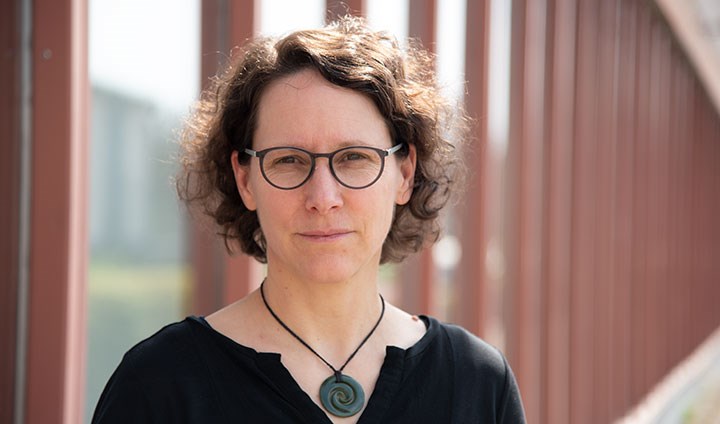
“So, this is your research. But how will you influence things?”
A question posed by a student in Gothenburg to Natalie Barker-Ruchti a few years ago. Now she knows the answer. Her research got a global breakthrough last summer and lead to, among other things, a Minister of Sports intervening against abuse in women’s gymnastics.
“Before last summer, I didn’t realise that I had such a voice,” she says.
The headlines have continued, with the latest New York Times and The Guardian articles published in early May. The breakthrough came last summer after the Netflix documentary ”Athlete A” – about the extensive sexual abuse of female artistic gymnasts in the USA.
This is the sport that came into the spotlight during the 70s after brilliant gymnasts like Olga Korbut and Nadja Comăneci – just children at the time – performed the next-to-impossible.
Not only was sexual abuse revealed, but also abusive training methods. While women’s artistic gymnastics is a global sport, the training to succeed in winning medals at international championships is the same, regardless of country.
Back in Örebro, Natalie Barker-Ruchti has studied this abuse in female artistic gymnastics.
It all started this past summer after an interview in an Australian newspaper. Natalie Barker-Ruchti obtained her PhD in Australia. With her knowledge from years of research, she could contribute knowledge of power, victims and perpetrators, excuses and justifications, silence and shame.
“Before last summer, I hadn’t realised that I’d need to be involved in the media to have an impact. But when the research is credible, many will listen. Even if I don’t really like all the attention, it’s worth my time. I’ve realised what I must do as a researcher. And it’s working!”
Australia was the genesis
In the year that has passed, Natalie Barker-Ruchti has figured in the media in Sweden, the Netherlands, Germany, New Zealand, Uruguay, the United States, Israel – and in her native Switzerland. Most recently in the UK and again in the USA.
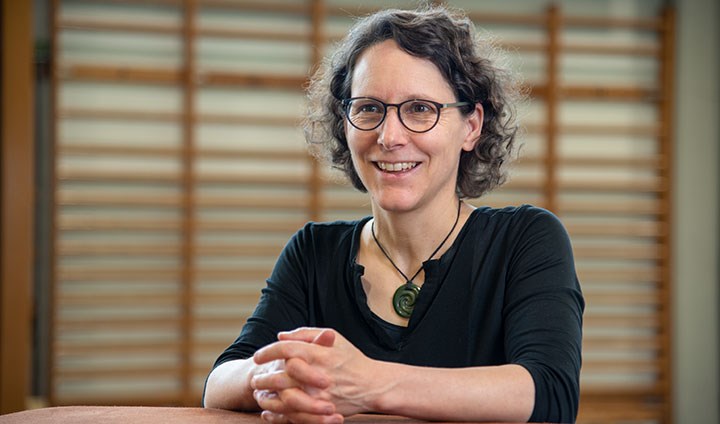
Last October, a 40-page special edition about female artistic gymnastics was published in several Swiss newspapers. This in-depth examination has exposed a sport where abuse is part of the culture to succeed in competitions. A weighty element in the publication was Natalie Barker-Ruchti’s study.
Switzerland’s Minister of Sports has declared no tolerance for such training methods, even if it means that the national team will miss out on taking medals in the future. She has appointed an investigation, and the opportunity for gymnasts to speak out on their experiences of abuse.
“I can’t imagine having a greater influence as a researcher. Investigative journalists at reputable newspapers have reached out after reading my research, and are very pleased to have found me. The publication has caused politicians to react too. This is effective since those in charge within gymnastics have been trying to hide the problems for years, even blaming the gymnasts themselves.”
Natalie Barker-Ruchti is extra credible as a researcher in her field. She has competed at a high level in gymnastics and having a passion for the sport since she was little. On the other hand, her road to an academic career has been filled with both twists and turns as well as unexpected coincidences.
Background in gymnastics
Natalie Barker-Ruchti comes from Zweisimmen, with 3,000 inhabitants in the Alps, south of Bern, Switzerland. In her village, there were two sports to choose from: downhill skiing and gymnastics.
“My Dad didn’t socialise with the men in the ski club. And since my Mum was involved in gymnastics, I also got into gymnastics. At one point, my Dad was a coach, without knowing anything about gymnastics.”
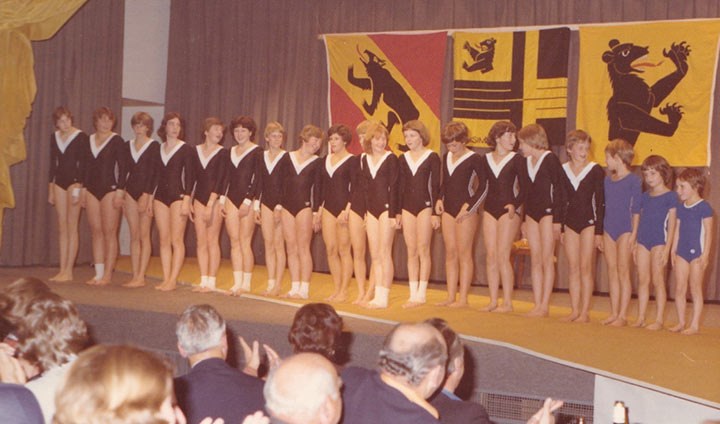
Natalie describes a photo of the club’s gymnasts, adult women aged 25 years lined up in order of height. At the far end is the shortest, six-year-old Natalie.
“I started in 1977, the year after Nadia Comaneci shot up as a world star. She changed gymnastics from a sport for adult women to one practiced by children.”
Natalie competed until she was 21 years old, well beyond the average retirement age of around 15 years. There was pressure to train hard, so Natalie trained hard. Even if she did not belong to the highest level, she competed internationally. As an 11-year-old, she aimed to be selected for a talent development program:
“But I wasn’t selected because I was considered too old, and my body was not considered suitable. After that, I always felt that I was too fat." She tells of a trip to Egypt for a competition, where one of the coaches pointed out that it was wrong to drink soda with the food, "But we weren’t allowed to drink the tap water due to the risk of getting a stomach ache. So, what were we supposed to drink?”
This body-fixation led Natalie to follow a strict diet in her last years of gymnastics, causing her to lose her menstrual period.
“I just thought that this was part of gymnastics. It wasn’t until much later that I realised what had actually happened."
No personal experience of abuse
“I’ve given much thought to why I wasn’t exposed to abuse. Perhaps the coaches didn’t think I was good enough. Or because I was a little older than the other gymnasts. No one said anything about the abuse that others experienced, perhaps a few whispers in the locker room.”
As a 21-year-old, Natalie left gymnastics. The last few months of her career were characterised by personal bests that quickly changed to poor results. After that, she lost motivation.
She never went to upper secondary school. Instead, she combined her gymnastics with going to vocational school. She worked at ski resorts to make money for summer travels. Eventually, she ended up in New Zealand, earning a living in tourism. After five years of this alternative lifestyle, she read about a gymnastics competition in a local newspaper.
“Being a coach rekindled my passion for the sport.”
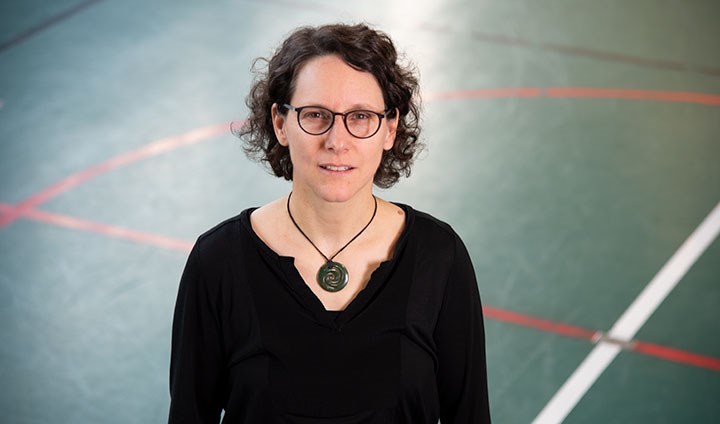
Her return to gymnastics opened the first door to her future professional career. Another door opened when she met with a careers officer who advised her to study sport science.
“I hadn’t even gone to upper secondary school! But I applied and got in on an entry quota for plus 21-year-olds. My starting point was that I was terrible at the English language and had no educational background. So, I had to study 24 hours a day!”
According to Natalie, her study results in the sport science programme were "completely unexpected". She graduated with top marks and could fine hone her bachelor’s degree with an honours thesis.
"I chose to interview other gymnasts about their experiences. There wasn't much research on this at the time, and I didn’t really know what I was looking for. But those I interviewed spoke of abuse.”
While she worked as a gymnastics coach, she wrote her master's thesis as an in-depth study in the subject, using action research. Action research focuses on evaluating and improving practice, like teaching or coaching.
“I assumed a practitioner's perspective, and in my thesis, I wanted to show that gymnasts can succeed – without being abused.”
“Now I saw the abuse”"
After three years, she was back in Switzerland with her husband, New Zealander Dean Barker, when another door opened:
“I googled 'sports science and PhD' and got in touch with a researcher in Australia. He answered me right away, 'come down to Australia!' It turned out that the professor was world-famous at a highly respected university. And there I received my doctorate, and so did my husband.”
While working on her thesis, Natalie Barker-Ruchti was able to comprehensively document the conditions for elite gymnasts. For a year, she observed a group of seven girls between 10 and 15 with elite ambitions in artistic gymnastics.
“Now I saw the abuse. I was there every week for practice and followed their competitions. When the girls cried, they were punished with extra strength exercises or were called 'idiots'. The girls were constantly injured and ate painkillers to continue their training. I saw how they limped and how a girl with an injured shoulder got bandaged, received painkillers and continued training. Over that year, I saw only one training where no had one cried.”
Natalie talked to the coaches but not to the gymnasts, since they did not want to talk to her. Now, 15 years later, two gymnasts from the group have come forward. They spoke openly about what they and their fellow gymnasts were exposed to. One got in direct contact with Natalie.
“One gymnast said to me that the coaches were always nicer when I was there as a research observer. And I was convinced I'd seen the worst of it. Another gymnast, just 10 at the time, spoke of how the gymnastics institution knew what was going on, but never stopped it. It was heartbreaking to hear how that 10-year-old child never got the support she should’ve received.”
Girls trained 32 hours a week
Parents dropped them off early and picked them up late.
“There is a culture in gymnastics not to talk about things at home so that parents don’t get too involved in training, which would only make the coaches angry. Most of the time, parents didn’t know what was going on at the gym. One of the researched gymnasts declared in her own words that it’s the only way to become a good gymnast.”
Natalie Barker-Ruchti's thesis is based on what she calls “novels”, stories about what she saw and heard over a year of observing gymnasts. The coaches and children can be heard in her thesis – as well as her reactions. After her thesis, Natalie Barker-Ruchti has continued her research on abuse in female artistic gymnastics. She took the initiative in 2016 to form the network ISCWAG, which brings together researchers from various fields. Summer of 2020, members in the network came out with a manifesto with eight points on how to counteract the abuse.
The explanation for the “culture” in women’s gymnastics came from the 1970s, after Olga Korbut and Nadja Comaneci knocked out their opponents. The successful Eastern European model gained followers in Western countries, literally exploding after the Soviet Union’s fall, providing the international gymnastics community with many top coaches from the East.
Natalie Barker-Ruchti observed one such example in Australia. A Russian couple continued working in many different countries and played a significant role in normalising the hard-nosed training tactics.
The documentary – and its domino effect
Last summer, Netflix released "Athlete A”, a documentary about the atrocities committed over so many years by Larry Nassar, the doctor for the US national team in women's artistic gymnastics. He was found guilty and sentenced in 2017 and 2018 to serve several hundred years in prison for serial sexual assaults and child pornography. These crimes have been going on since the early 1990s.
In one country after the other, current and former gymnasts appeared publicly and testified about abuse. Silence was being broken.
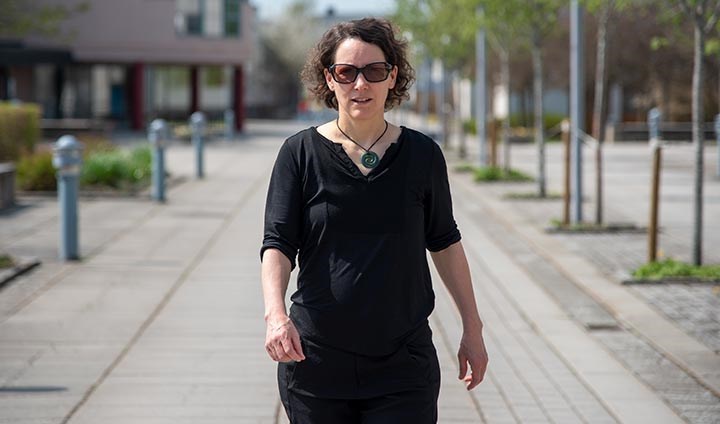
Natalie Barker-Ruchti has been in demand because of her research expertise. She has “felt a responsibility to take a stand on the side of the gymnasts.” She feels pleased over what is happening in Switzerland as well as in the other countries.
“Leaders of the national association have now expressed that they want the sport to be for women – and not for children. And that it’s not just about winning medals. Which is amazing and wouldn't have happened just a few years ago. For me, what’s been happening in gymnastics is simply wrong and must be changed.”
Natalie Barker-Ruchti came to Örebro University in 2019 after several years at the University of Gothenburg. Sweden and the other Scandinavian countries have a tempting offer to attract researchers: a family-friendly approach, meaning that even mothers are expected to work when the children are young.
“A totally positive experience”
Since last summer, her time has been filled with work practising the university’s “third mission”, generating awareness outside of academia of the benefits of research. Her experience with the media during this intense period has been a positive one.
“For me, it has been a totally positive experience. I have requested questions in advance to better prepare myself and get quoted correctly. I have also demanded texts before publication and been able to correct any inaccuracies. I’ve learned the key to success is finding the right journalists.”
Once a 25-year-old lacking an upper secondary education or any thought of studying at university – Natalie Barker-Ruchti now reaches out all over the world to impact the future of women’s gymnastics.
Text: Maria Elisson
Translation: Jerry Gray
Photo: Jesper Mattsson
Natalie Barker-Ruchti in international media (open):
Deutschlandfunk 27 December 2020
Deutschlandfunk 22 December 2020
De Correspondent 21 December 2020
Interview 6 December by Romina Castellini, Uruguay for her blog on gymnastics
Interview by Dvora Meyers, USA, journalist and writer, 2 October 2020
